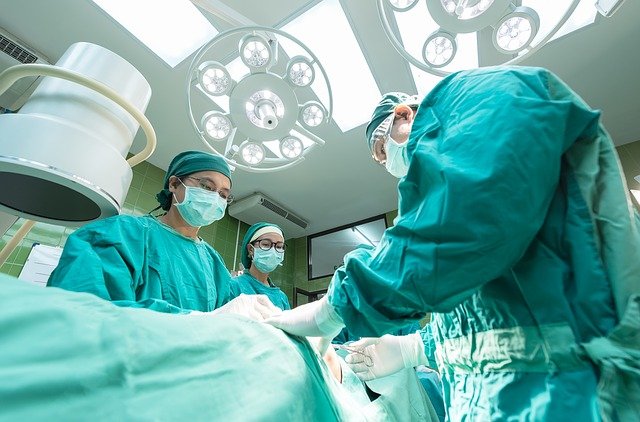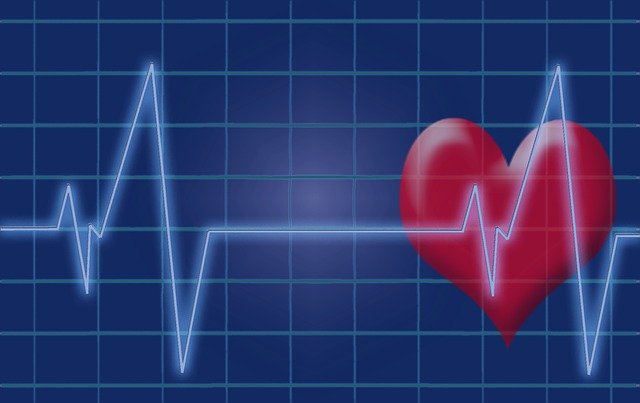How long does it take for a person to die after the heart stops beating?
- A Single US$2.15-Million Injection to Block 90% of Cancer Cell Formation
- WIV: Prevention of New Disease X and Investigation of the Origin of COVID-19
- Why Botulinum Toxin Reigns as One of the Deadliest Poisons?
- FDA Approves Pfizer’s One-Time Gene Therapy for Hemophilia B: $3.5 Million per Dose
- Aspirin: Study Finds Greater Benefits for These Colorectal Cancer Patients
- Cancer Can Occur Without Genetic Mutations?
How long does it take for a person to die after the heart stops beating?
- Red Yeast Rice Scare Grips Japan: Over 114 Hospitalized and 5 Deaths
- Long COVID Brain Fog: Blood-Brain Barrier Damage and Persistent Inflammation
- FDA has mandated a top-level black box warning for all marketed CAR-T therapies
- Can people with high blood pressure eat peanuts?
- What is the difference between dopamine and dobutamine?
- How long can the patient live after heart stent surgery?
How long does it take for a person to die after the heart stops beating?
3 minutes after the heart stops beating can lead to the death of a large area of brain cells, more than 5 minutes can lead to the death of important tissue cells such as the brain, heart, lungs and other important tissue.
Under normal circumstances, physiological death refers to the arrest of breathing and heartbeat, while death in ethics also includes brain death.
Brain cells cannot supply energy through anaerobic metabolism and are sensitive to hypoxia.
The oxygen and nutrients remaining in the brain cells can only be maintained for 1-3 minutes after the blood supply is stopped.
Therefore, if it exceeds 3 minutes, a large area of brain cells will die.
Irreversible brain damage or cerebral edema usually occurs within 4 minutes after cardiac arrest.
The cardiomyocytes are more dependent on oxygen and nutrients than brain cells, but the maintenance time does not exceed 5 minutes.
Sudden cardiac arrest occurs when the patient loses consciousness completely, and if not rescued immediately, the patient usually enters death within minutes.

Generally, if the heart fails to recover within half an hour after the heart stops beating, it cannot be rescued, and the doctor will declare the patient brain dead.
The heart is a very important pump in blood circulation.
It has two main functions. The main function is to pump arterial blood into the aorta and its branches to supply blood and oxygen to various important organs such as the brain, kidneys, and heart.
The main function is to pump venous blood into the pulmonary blood vessels, because there is oxygen inhaled by the human body in the lungs, and venous blood can only become arterial blood when combined with oxygen.
If the heart stops beating, arterial blood cannot be pumped into the aorta and its branches in a timely and effective manner to supply blood and oxygen to vital organs such as the brain. And if it exceeds 30 minutes, irreversible brain death will occur.

Information about cardiac arrest
Cardiac arrest refers to the sudden termination of the cardiac ejection function, the disappearance of aortic pulses and heart sounds, and the severe ischemia and hypoxia of vital organs (such as the brain), resulting in the termination of life.
The most common cause of cardiac arrest is ventricular fibrillation.
If there is no response to calling the patient, and there is no response to the supraorbital and infraorbital compression, it can be determined that the patient is in a coma.
Then pay attention to observe whether the patient’s chest and abdomen have up and down breathing movements.
If the carotid artery and femoral artery are not pulsating, and the heartbeat cannot be heard in the precordial area, it can be determined that the patient has suffered cardiac arrest.
Causes
“2005 American Heart Association Guidelines for Cardiopulmonary Resuscitation and Cardiovascular First Aid” summarizes the common causes of cardiac arrest as follows:
① lack of O2.
②Hypokalemia / hyperkalemia and other electrolyte abnormalities.
③ hypothermia/hyperthermia.
④ low blood volume.
⑤ low blood sugar / high blood sugar.
⑥ drugs.
⑦ cardiac tamponade.
⑧ Pulmonary embolism .
⑨ Coronary vascular embolization.
⑩ pneumothorax , asthma.
Clinical manifestations
The clinical course of sudden cardiac arrest or sudden cardiac death can be divided into 4 periods: prodromal period, morbidity period, cardiac arrest period and death period.
1. Prodromal period
Many patients have prodromal symptoms for days, weeks, or even months before cardiac arrest, such as worsening of angina , shortness of breath, or palpitations, susceptibility to fatigue, and other nonspecific complaints.
These prodromal symptoms are not unique to sudden cardiac death , but often precede any heart attack.
Some data show that 50% of sudden cardiac death patients have sought a doctor within one month before sudden death , but their main complaints are often not necessarily related to the heart.
Among survivors of out-of-hospital cardiac arrest, 28% had an exacerbation of angina or shortness of breath prior to cardiac arrest.
However, prodromal symptoms only suggest a risk of cardiovascular disease, but do not identify those subgroups who develop sudden cardiac death .
2. Onset period
That is, the period of acute cardiovascular changes leading to cardiac arrest, usually less than 1 hour.
Typical manifestations include: prolonged angina pectoris or chest pain of acute myocardial infarction , acute dyspnea, sudden palpitations, persistent tachycardia, dizziness, etc.
If the cardiac arrest occurs instantaneously and there is no prior warning, 95% are of cardiac origin and have coronary artery disease.
From the continuous ECG recordings obtained from the sudden cardiac death, it can be seen that there are often changes in the cardiac electrical activity in the hours or minutes before the sudden death, among which the rapid heart rate and the deterioration of the premature ventricular contraction are the most common.
Sudden death from ventricular fibrillation is often preceded by a burst of sustained or non-sustained ventricular tachycardia .
These patients with arrhythmia onset are mostly awake before onset and in daily activities, with a short onset period (from onset to cardiac arrest). Electrocardiogram abnormalities are mostly ventricular fibrillation .
Others suffer from circulatory failure and are inactive or even coma before cardiac arrest. The onset period is long.
Noncardiac disease often precedes end-of-life cardiovascular changes.
The abnormal electrocardiogram is more common in ventricular arrest than in ventricular fibrillation .
3. Cardiac Arrest
Complete loss of consciousness is characteristic of the period. If it is not rescued immediately, it usually enters the death period within a few minutes. Spontaneous reversals are rare.
Cardiac arrest is a sign of clinical death, and its symptoms and signs are as follows:
① disappearance of heart sounds;
② unpalatable pulse, undetectable blood pressure;
③ sudden loss of consciousness or accompanied by brief convulsions, which are often systemic and mostly occur in the heart Within 10 seconds after asystole, sometimes with eye deviation;
④ intermittent breathing, sigh-like, and then stop. Mostly occurs within 20 to 30 seconds after cardiac arrest;
⑤ coma, mostly occurs after 30 seconds of cardiac arrest;
⑥ mydriasis, mostly occurs 30 to 60 seconds after cardiac arrest. But this period has not yet reached biological death.
If timely and appropriate rescue is given, there is a possibility of resuscitation.
The success rate of resuscitation depends on:
(1) the start of resuscitation;
(2) the location of the cardiac arrest;
(3) the type of abnormal cardiac activity ( ventricular fibrillation , ventricular tachycardia , electromechanical dissociation, and ventricular arrest);
(4) cardiac arrhythmia. The clinical condition of the patient prior to stopping.
If the cardiac arrest occurs in a place where CPR can be performed immediately, the resuscitation success rate is higher.
Under conditions where immediate resuscitation is available in a hospital or intensive care unit, the success rate of resuscitation depends primarily on the patient’s clinical condition prior to cardiac arrest: acute cardiac conditions or transient metabolic disturbances have a better prognosis; chronic Late-stage heart disease or severe non-cardiac conditions (eg, renal failure, pneumonia , sepsis , diabetes , or cancer) have no higher resuscitation success rates than resuscitation from out-of-hospital cardiac arrest.
The success rate of the latter depends mainly on the type of cardiac electrical activity at the time of cardiac arrest, with ventricular tachycardia having the best prognosis (success rate of 67%), ventricular fibrillation (25%), ventricular arrest and electromechanical The prognosis for separation is poor.
Advanced age is also an important factor affecting the success of resuscitation.
4. Biological death period
The evolution of cardiac arrest to biological death mainly depends on the type of cardiac electrical activity and the timeliness of cardiac resuscitation. Ventricular fibrillation or asystole, if CPR is not given within 4 to 6 minutes, has a poor prognosis.
If cardiopulmonary resuscitation is not given within 8 minutes, there is little survival unless under special circumstances such as hypothermia.
Statistically, immediate CPR and early defibrillation by witnesses are the keys to avoiding biological death. The most common cause of in-hospital death after CPR is injury to the central nervous system.
Hypoxic brain injury and infections secondary to prolonged use of ventilators account for 60% of deaths, low cardiac output accounts for 30% of deaths, and recurrence of arrhythmias accounts for only 10% of deaths.
The prognosis of cardiac arrest complicated by acute myocardial infarction depends on whether it is primary or secondary: the former cardiac arrest occurs without hemodynamic instability; the latter is secondary to the unstable hemodynamic state.
Therefore, if the primary cardiac arrest can be resuscitated immediately, the success rate can reach 100%; while the prognosis of secondary cardiac arrest is poor, and the resuscitation success rate is only about 30%.
(source:internet, reference only)
Disclaimer of medicaltrend.org
Important Note: The information provided is for informational purposes only and should not be considered as medical advice.



